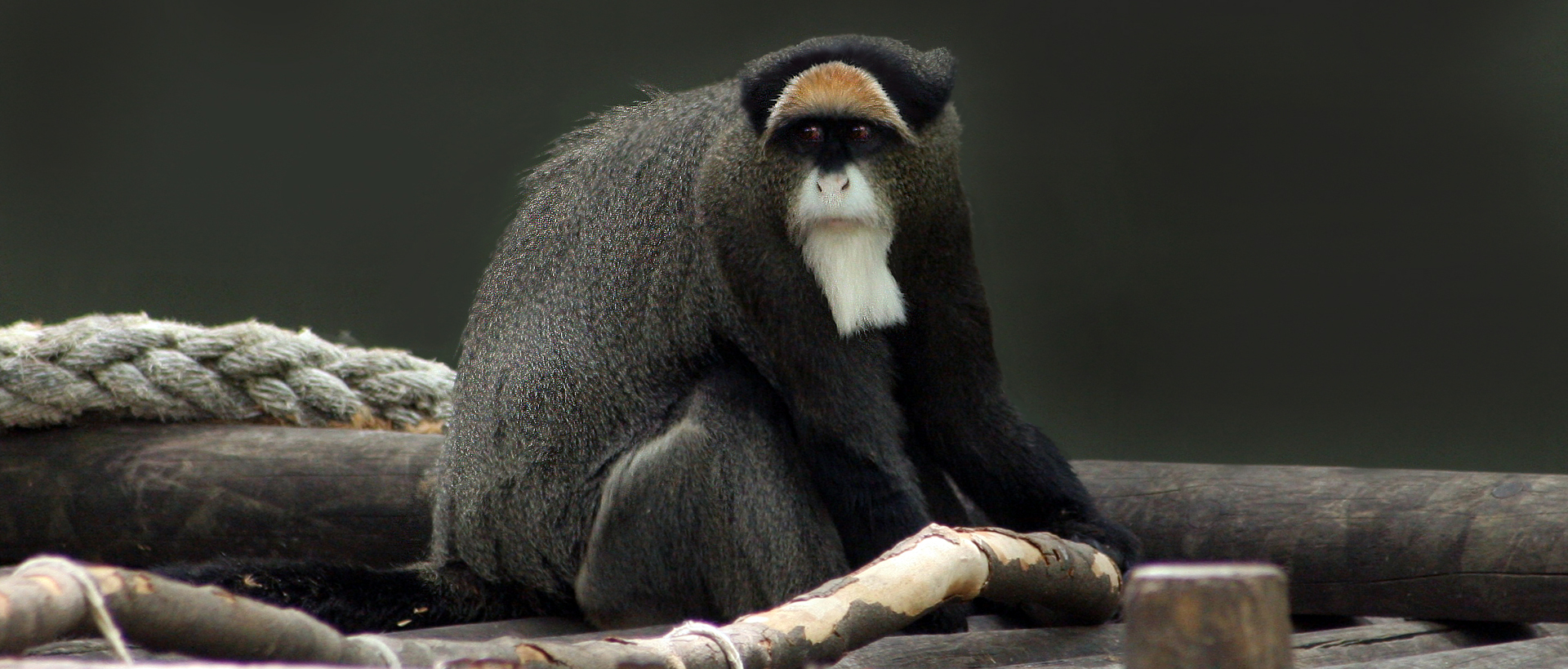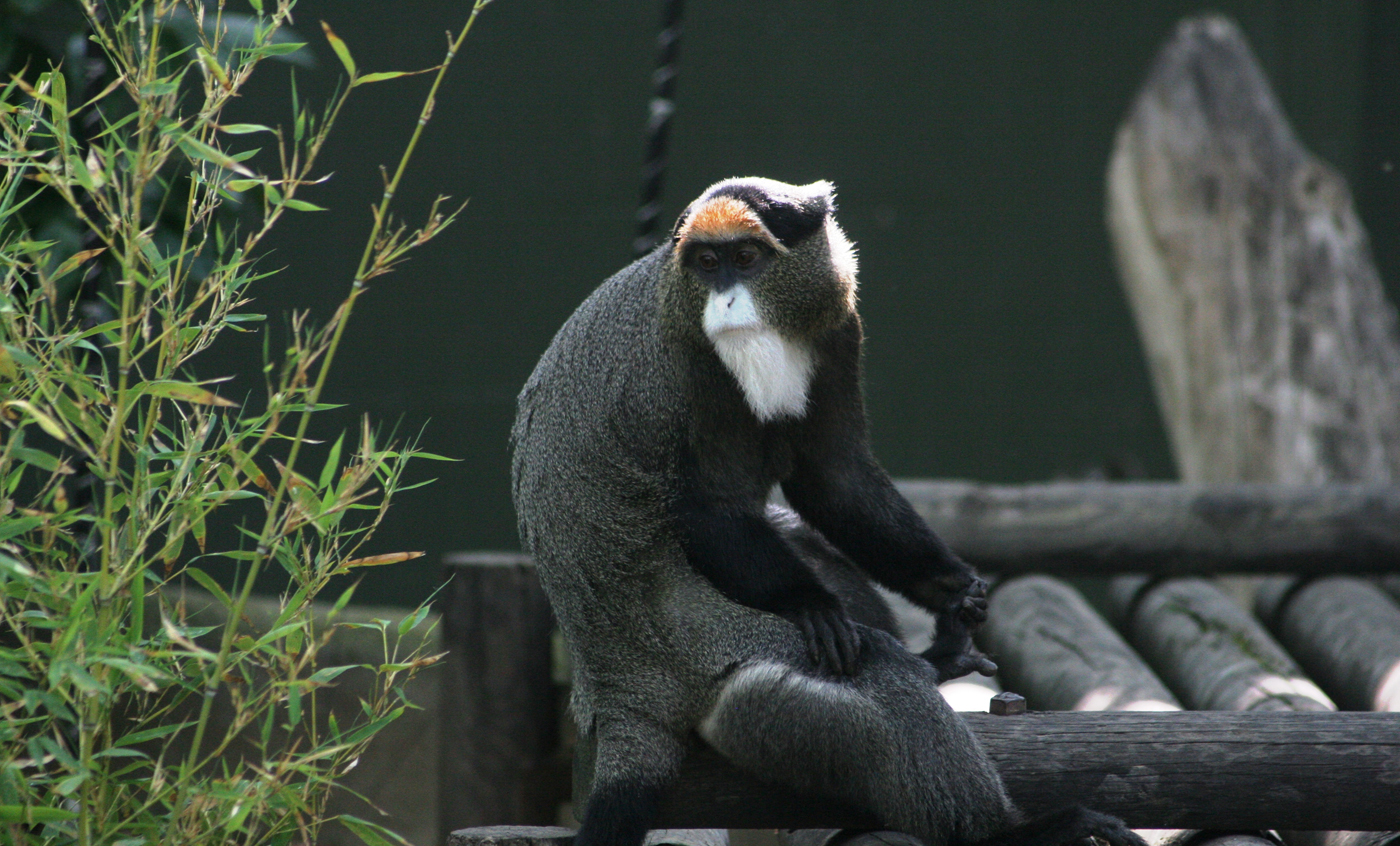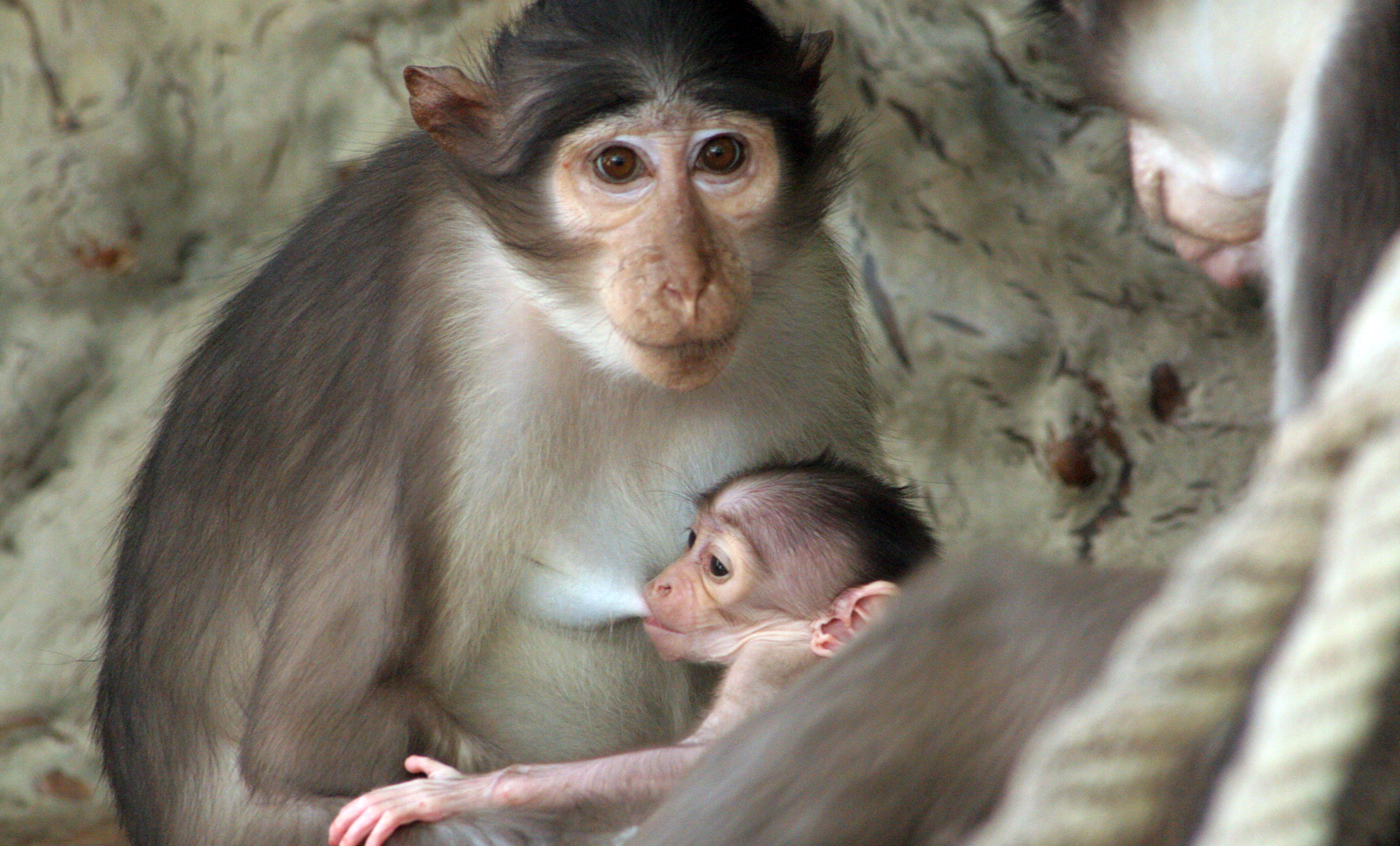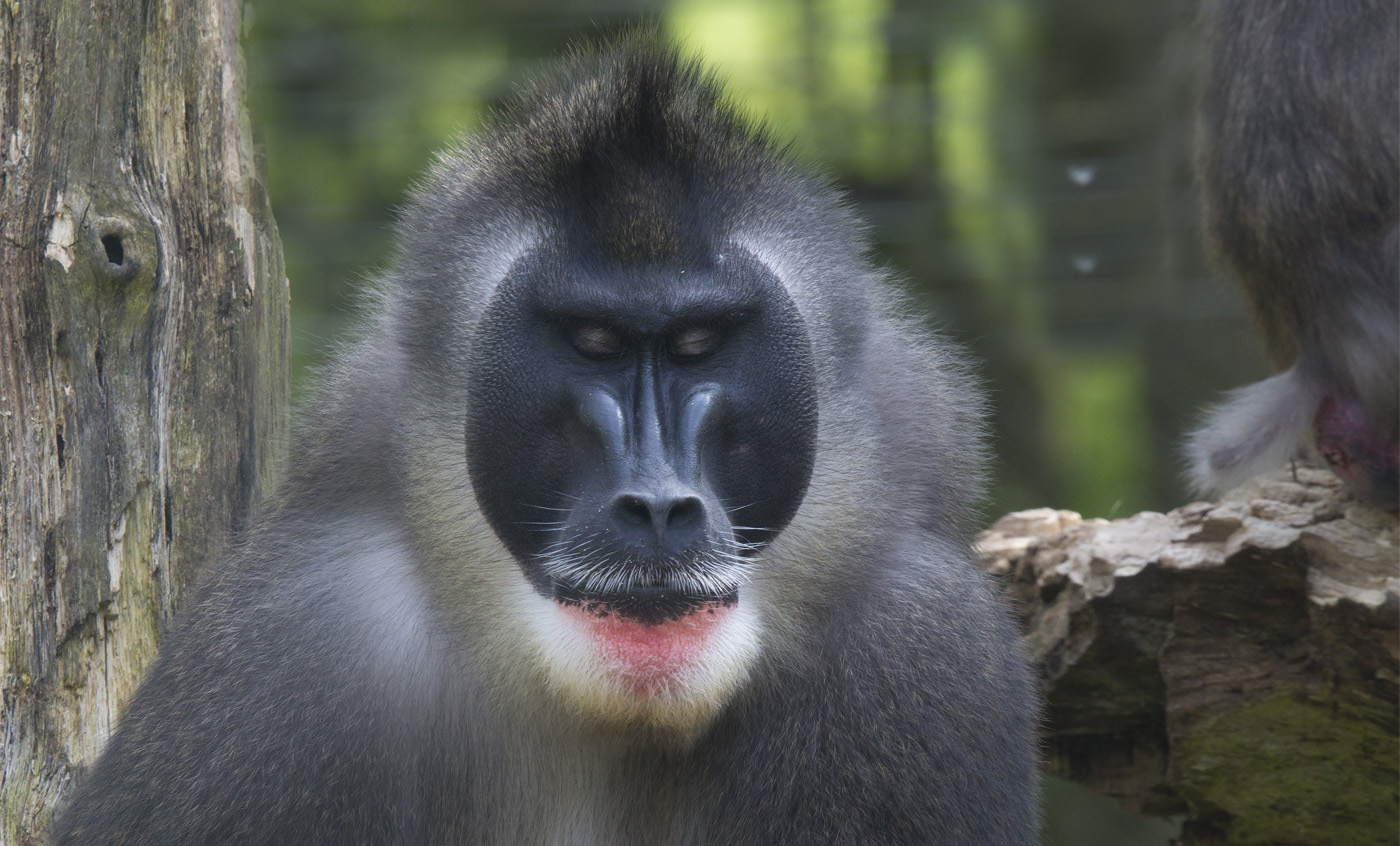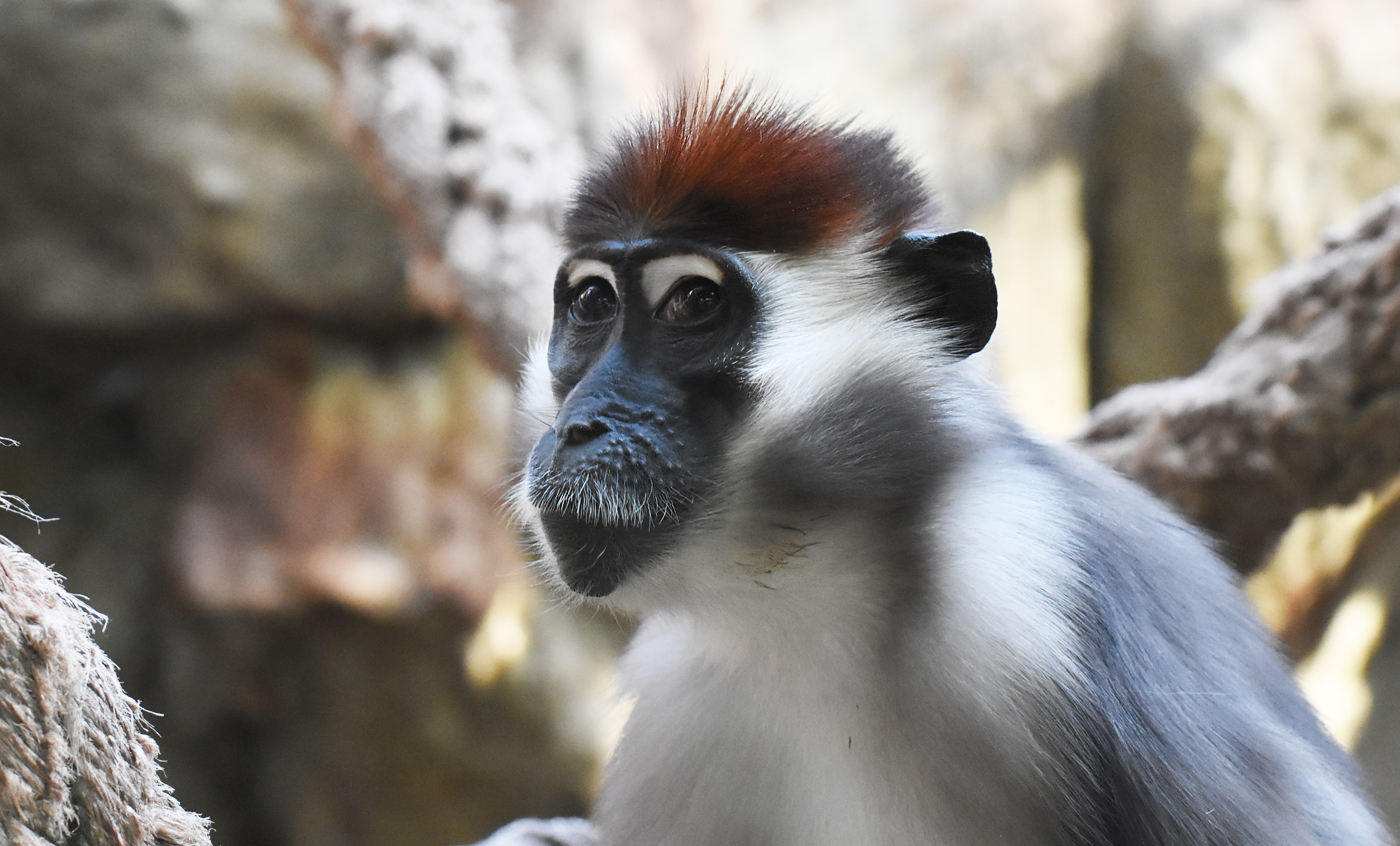De Brazza's monkey
Among the several African arboreal monkeys, this species is the one living in the lowest stratum and prefers riparian forests, close to rivers and swamps, although it can also be found in dense forests, especially in bamboo forests.
As in most guenons, it is sociable and lives in groups that can become very large. In each group there usually can be found a single dominant male, and the other adult males are solitary.
Natural habit
Central Africa, from Cameroon to Ethiopia and from Kenya to Angola.
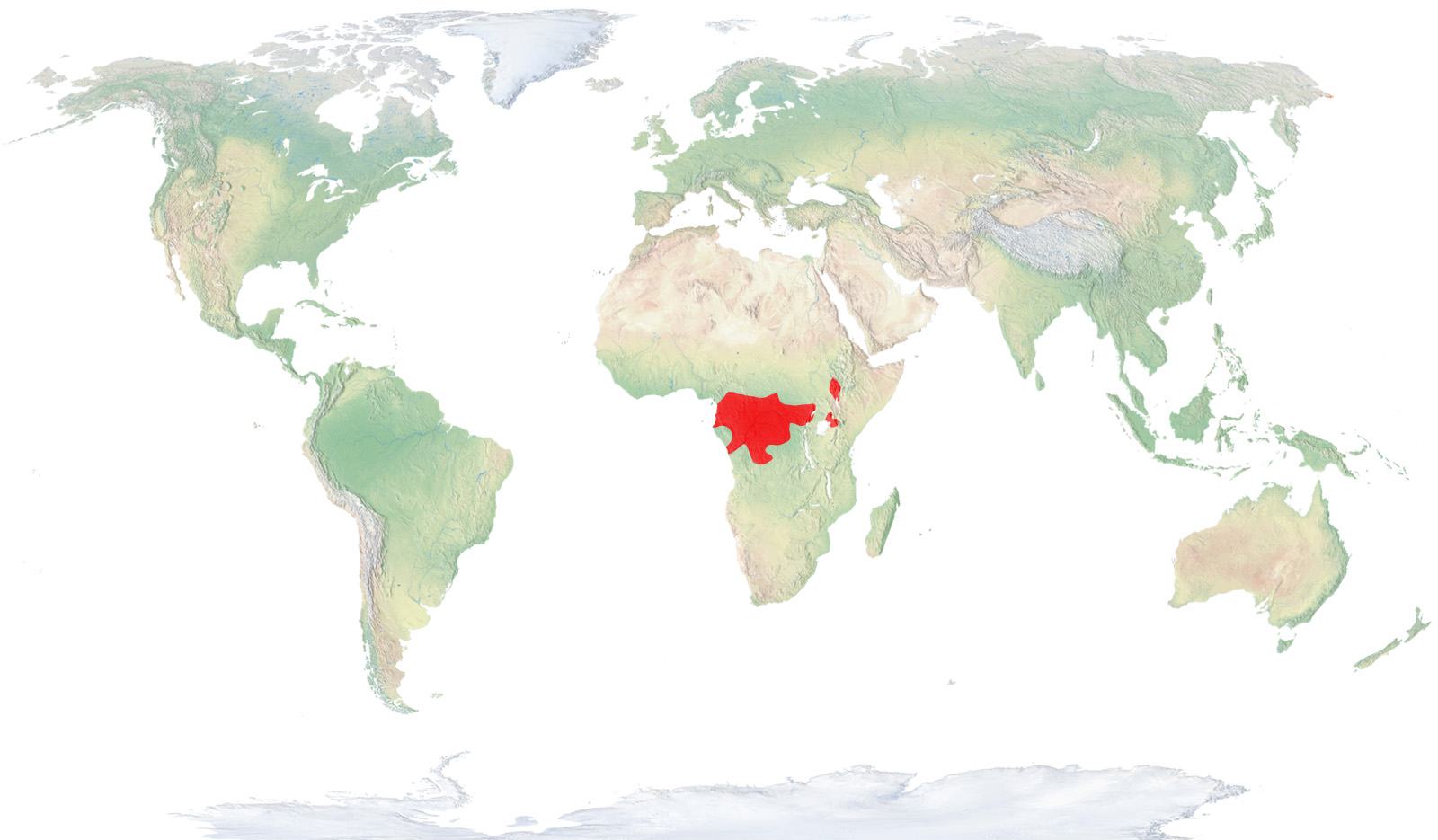
- Distribution / Resident
- Breeding
- Wintering
- Subspecies
Risk level
- Extint
- Extint in the wild
- Critically endangered
- In Danger
- Vulnerable
- Near threatened
- Minor concern
- Insufficient data
- Not evaluated
Taxonomy
Physical characteristics
Biology
Reproduction
Biology
The De Brazza’s monkey is a small African primate that is sometimes referred to as the “Ayatollah Monkey”, after its characteristic white beard, which appears very outstanding, in contrast to the rest of the body. Its body fur is grey, its forehead as a cream colour and its tail and limbs are black.
It inhabits riparian forests and rainforests, especially in swamp regions, in an extensive area in central Africa.
Despite being basically a frugivorous, as its diet consists of fruit in a 75%, it also feeds on leaves, tender sprouts, insects, eggs and small vertebrates. Is in other species of Cercopithecidae, it has expandable cheeks, where they can store food while foraging.
Gestation lasts for five to six months and a single infant is born each time, who is looked after exclusively by its mother.
Essentially arboreal, it often descends to the ground, in order to searching for food. Unlike other Cercopithecidae species, it usually does not live in large groups, preferring to live in couples or small family groups. The size of both sexes varies, as males are almost twice as big as females. Its mating system is polygenic, with a dominant male per group, although some populations have been reported to be monogamous.
The populations are decreasing, as a consequence of excessive hunting and, mainly, due to the deforestation of their natural environment.
The Zoo of Barcelona takes part in the EEP of this species.



